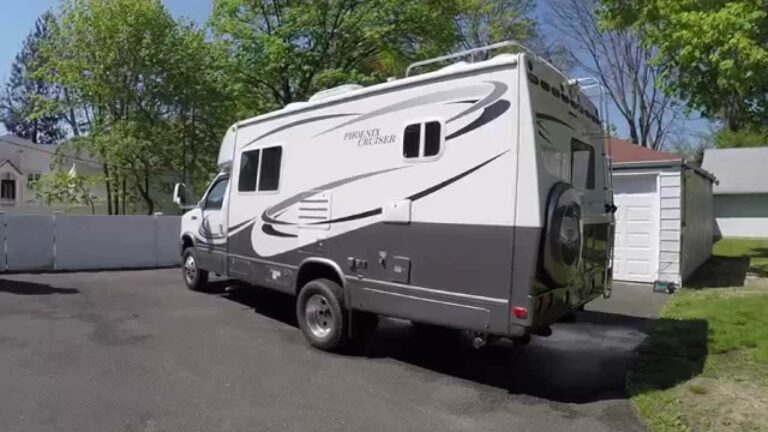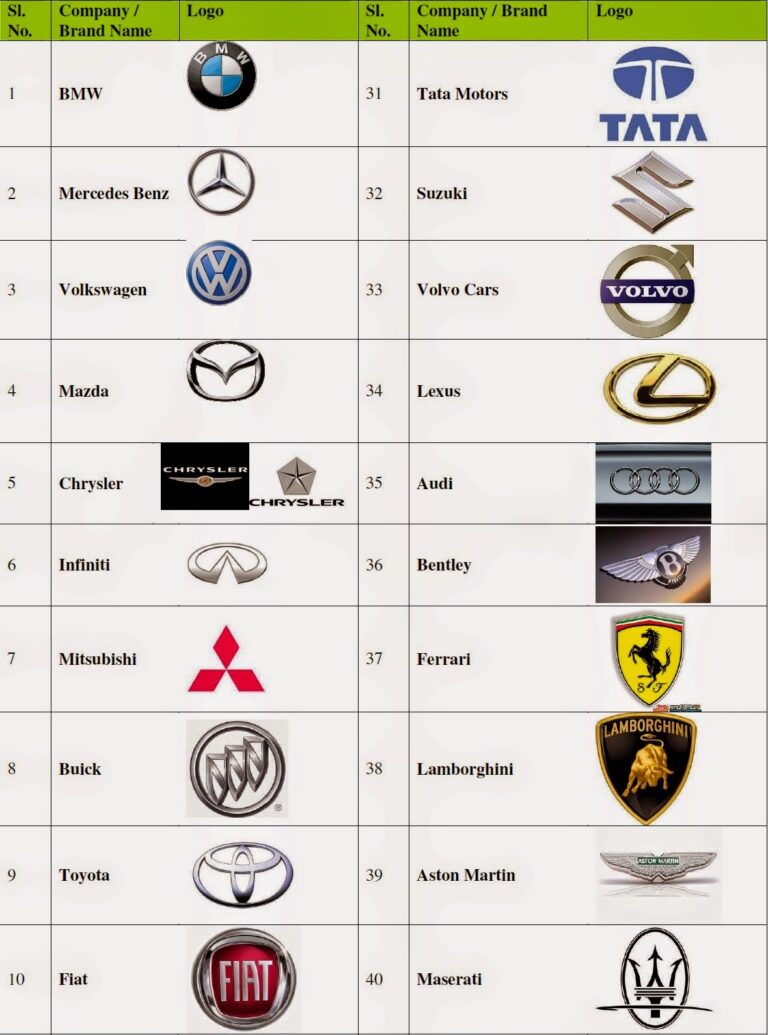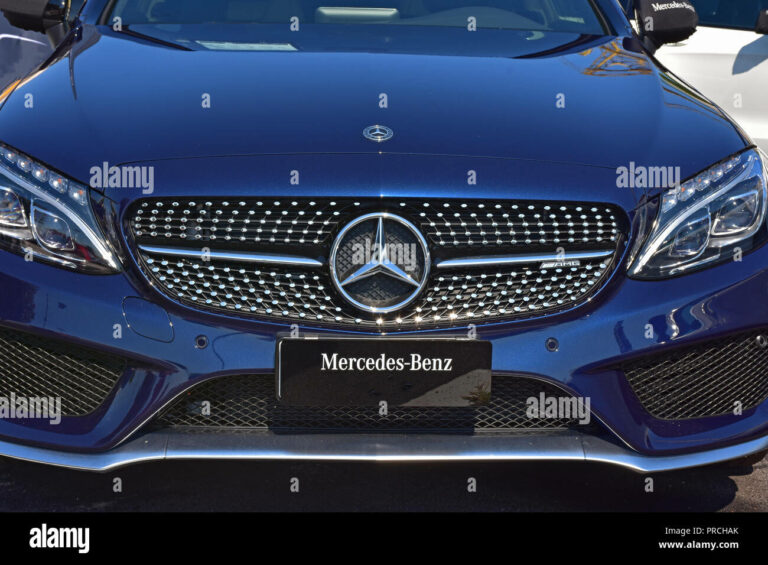Top Rated Car Speaker Brands: Elevate Your In-Car Audio Experience
Top Rated Car Speaker Brands: Elevate Your In-Car Audio Experience cars.truckstrend.com
For many, a car is more than just a mode of transportation; it’s a personal sanctuary, a mobile office, or a concert hall on wheels. And at the heart of that concert hall lies the car audio system. While factory-installed speakers are designed for general use, they often fall short in delivering the rich, detailed, and powerful sound that true audiophiles or even casual music lovers crave. Upgrading to top-rated car speaker brands is the single most impactful way to transform your driving soundtrack, bringing clarity, depth, and enjoyment to every journey.
This comprehensive guide will delve into the world of top-rated car speaker brands, exploring why an upgrade is essential, what to look for when choosing new speakers, and spotlighting the industry leaders renowned for their exceptional sound quality and innovation.
Top Rated Car Speaker Brands: Elevate Your In-Car Audio Experience
Why Upgrade Your Car Speakers? Beyond Just Louder Music
The sound quality from factory car speakers is typically compromised due to cost-cutting measures and generic design. They often use flimsy materials, small magnets, and limited power handling, resulting in a flat, muddy, or distorted sound, especially at higher volumes. Upgrading to aftermarket speakers from a reputable brand offers a multitude of benefits:
- Superior Sound Clarity: Experience crisp highs, detailed mids, and accurate vocals without distortion.
- Deeper, Tighter Bass: While not a substitute for a subwoofer, quality speakers provide significantly better low-frequency response than stock options.
- Improved Soundstage: The music feels more expansive, as if the sound is coming from around you rather than just two points.
- Higher Power Handling: Handle more power from your head unit or an external amplifier, allowing for louder volumes without degradation.
- Enhanced Durability: Built with higher quality materials, aftermarket speakers are designed to last longer and withstand the harsh automotive environment.
- Overall Listening Enjoyment: Simply put, your favorite music will sound better, making every drive more pleasurable.
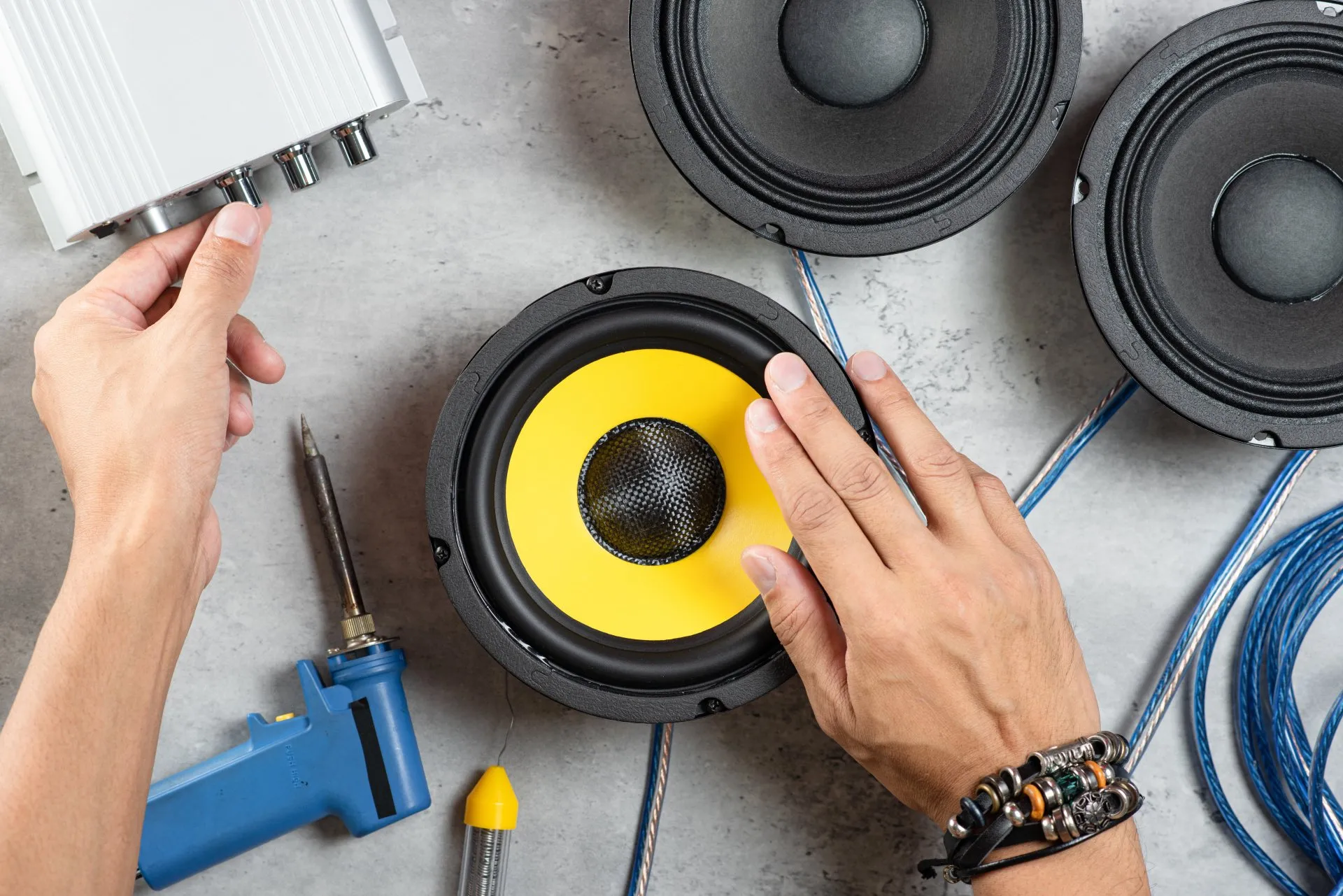
Key Factors to Consider When Choosing Car Speakers
Navigating the vast array of car speakers can be daunting. Understanding these key specifications will help you make an informed decision:
-
Types of Speakers:
- Coaxial (Full-Range) Speakers: These are the most common type, with all speaker components (woofer, tweeter, and sometimes a mid-range driver) combined into a single unit. They are easy to install and a great upgrade from factory speakers.
- Component Speakers: These systems separate the tweeter, woofer, and crossover network. This allows for superior sound imaging and staging, as you can mount the tweeters separately (e.g., on the dash or A-pillars) for better high-frequency directionality. They offer better sound quality but are more complex to install.
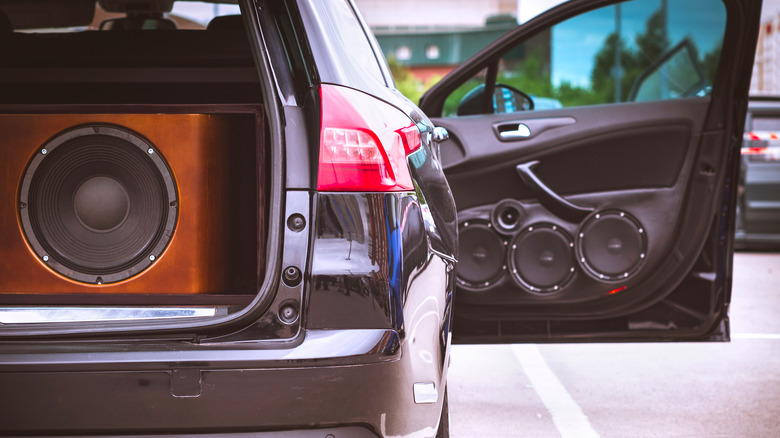
-
Power Handling (RMS vs. Peak):
- RMS (Root Mean Square) Power: This is the continuous power a speaker can handle reliably. Always prioritize RMS power as it indicates the speaker’s true performance capability.
- Peak Power: This is the maximum power a speaker can handle for a very brief moment. It’s a less critical specification for real-world performance.
- Matching: Ensure the speaker’s RMS power handling is compatible with your head unit’s or amplifier’s RMS output.
-
Sensitivity (SPL – Sound Pressure Level):
- Measured in decibels (dB), sensitivity indicates how efficiently a speaker converts power into sound. A higher sensitivity rating (e.g., 90dB+) means the speaker will play louder with less power. This is crucial if you’re keeping your factory head unit, which typically has low power output. For amplified systems, sensitivity is less critical.
-
Frequency Response:
- This specifies the range of frequencies (measured in Hz) a speaker can reproduce, from low bass to high treble. A wider frequency response (e.g., 40Hz – 20kHz) generally indicates a more comprehensive sound.
-
Impedance:
- Measured in ohms (Ω), impedance is the electrical resistance of the speaker. Most car speakers are 4-ohm. Ensure your speakers’ impedance matches your amplifier’s capabilities to prevent damage and ensure optimal performance.
-
Materials:
- Cone Material: Affects sound clarity and durability. Common materials include polypropylene, mica-filled polypropylene, woven fiberglass, carbon fiber, or silk. Lighter, stiffer materials generally offer better accuracy.
- Tweeter Material: Determines the smoothness and detail of high frequencies. Silk, textile, and soft domes typically produce warmer, smoother highs, while metal (aluminum, titanium) domes can be brighter and more detailed.
-
Size and Fit:
- Speakers come in various standard sizes (e.g., 6.5", 6×9", 5.25", 4"). Always check your car’s factory speaker size and mounting depth before purchasing. Some cars may require adapter plates.
-
Budget:
- Car speakers range from under $50 a pair to several hundred or even thousands. Set a realistic budget and consider the overall value (performance for the price) rather than just the cheapest option.

Top Rated Car Speaker Brands: A Deep Dive
Here are some of the most highly regarded car speaker brands, known for their innovation, sound quality, and reliability:
-
JBL: A household name in audio, JBL offers a wide range of car speakers known for their balanced sound, clear highs, and robust bass. They are a great choice for those looking for a significant upgrade from factory speakers without breaking the bank.
- Known For: Reliable performance, good value, punchy bass.
- Popular Series: Club, GTO, Stadium.
- Target Audience: General consumers seeking a noticeable upgrade, bass enthusiasts.
-
Pioneer: A long-standing leader in car audio, Pioneer delivers consistent quality and a diverse product line. Their speakers often feature excellent clarity and good power handling, making them a popular choice for all levels of enthusiasts.
- Known For: Balanced sound, durability, wide product range.
- Popular Series: TS-A Series, TS-G Series, D-Series (high-res audio).
- Target Audience: Everyday listeners to those building a more advanced system.
-
Kenwood: Another industry veteran, Kenwood provides reliable and affordable speaker solutions that offer a clear improvement over stock systems. Their speakers are known for their decent bass response and overall crisp sound.
- Known For: Good value, solid performance, easy upgrade.
- Popular Series: KFC-C (performance), KFC-P (component).
- Target Audience: Budget-conscious buyers, general upgrades.
-
Infinity: Part of the Harman International family (alongside JBL), Infinity speakers are celebrated for their patented Plus One™ cone technology, which maximizes cone area for better bass response. They offer a bright, detailed sound signature.
- Known For: Clear highs, strong bass, efficiency (good for low-power head units).
- Popular Series: Reference, Kappa.
- Target Audience: Those seeking detailed sound and efficiency without external amps.
-
Kicker: Known for their emphasis on powerful bass and high output, Kicker speakers are popular among those who love their music loud and impactful. While specializing in bass, their full-range speakers also deliver good clarity.
- Known For: High power handling, robust bass, aggressive sound.
- Popular Series: DS, KS, CS.
- Target Audience: Bass lovers, those building high-output systems.
-
Rockford Fosgate: A true powerhouse in car audio, Rockford Fosgate offers speakers ranging from solid entry-level options to high-end competition-grade models. They are respected for their durable construction and powerful, dynamic sound.
- Known For: Durability, powerful sound, wide range of options.
- Popular Series: Prime, Punch, Power.
- Target Audience: Enthusiasts, those building powerful and durable systems.
-
Focal: Hailing from France, Focal is synonymous with high-fidelity audio. Their car speakers are crafted with precision, using premium materials to deliver exceptionally accurate, detailed, and natural sound reproduction. They represent a significant investment but offer an unparalleled listening experience.
- Known For: Audiophile-grade sound, exquisite detail, premium materials.
- Popular Series: Access, Performance, Flax, Utopia.
- Target Audience: Serious audiophiles, those seeking the best possible sound quality.
-
JL Audio: Renowned for their subwoofers, JL Audio also produces fantastic full-range and component speakers. Their speakers are designed for excellent power handling and deliver a very clean, dynamic, and articulate sound, often with impressive bass for their size.
- Known For: Exceptional build quality, clean and powerful sound, great bass response.
- Popular Series: C1, C2, C3, C5, C7.
- Target Audience: Discerning listeners, those building high-performance systems.
-
Alpine: A comprehensive car audio brand, Alpine offers speakers that are well-regarded for their clear, balanced sound and robust construction. They are a reliable choice for a significant upgrade that offers great value.
- Known For: Balanced sound, reliability, good integration with Alpine head units.
- Popular Series: S-Series, R-Series, X-Series.
- Target Audience: General consumers, those building an integrated Alpine system.
Table of Top Rated Car Speaker Brands (Typical Price Range Per Pair)
| Brand | Specialty / Known For | Typical Price Range (Per Pair) | Pros | Cons |
|---|---|---|---|---|
| JBL | Balanced sound, good value, punchy bass | $70 – $300 | Clear highs, strong bass, reliable, wide range of options | Mid-range can sometimes be less detailed than high-end brands |
| Pioneer | Consistent quality, wide product range, balanced sound | $60 – $250 | Excellent clarity, good power handling, durable | Not always the absolute best in any single aspect (e.g., bass) |
| Kenwood | Affordable, solid performance, clear sound | $50 – $200 | Great value, decent bass, easy upgrade from factory | May lack the finesse of higher-priced competitors |
| Infinity | Bright, detailed sound, efficient, strong bass for size | $80 – $350 | Plus One™ cone tech, excellent efficiency, clear highs | Can sound a bit "bright" to some listeners |
| Kicker | High output, robust bass, durable | $70 – $300 | Handles power well, impactful bass, built tough | Some models can sound a bit harsh at very high volumes |
| Rockford Fosgate | Powerful, dynamic sound, durability, wide range | $80 – $500+ | Excellent build quality, strong bass, high power handling | Can be expensive for their top-tier models |
| Focal | Audiophile-grade, exceptional detail, natural sound | $200 – $1000+ | Unrivaled clarity, precise imaging, premium materials | Very expensive, often requires external amplification |
| JL Audio | Clean, dynamic sound, excellent power handling | $150 – $700+ | Superb build quality, articulate bass, balanced soundstage | Higher price point, some models benefit greatly from amplification |
| Alpine | Balanced sound, reliability, good system integration | $80 – $400 | Clear and accurate sound, durable, good match with Alpine head units | May not offer the extreme performance of specialized brands |
Note: Prices are approximate and can vary significantly based on model, size, retailer, and sales. These ranges are for a pair of coaxial or component speakers.
Installation Tips and Considerations
Once you’ve chosen your new speakers, proper installation is key to maximizing their performance:
- DIY vs. Professional Installation: While many coaxial speakers are relatively easy to install for the handy DIYer, component systems or complex integrations (like sound deadening) are often best left to professional installers. Professionals ensure correct wiring, proper mounting, and optimal sound tuning.
- Tools: For DIY, you’ll need basic hand tools, wire strippers, crimpers, and potentially a drill.
- Sound Deadening: Applying sound deadening material (like Dynamat or Kilmat) to the inside of your door panels is highly recommended. It reduces road noise, eliminates vibrations, and dramatically improves bass response and overall clarity by creating a more stable environment for the speaker.
- Wiring: Use high-quality speaker wire. While factory wiring might suffice for basic upgrades, an amplifier will necessitate heavier gauge wire.
- Matching with Amplifier/Head Unit: Ensure your speakers’ power handling (RMS) matches your head unit’s or amplifier’s output. Underpowering or overpowering can lead to poor sound or damage.
Maximizing Your Car Audio Experience
New speakers are a fantastic start, but consider these additional upgrades for the ultimate car audio setup:
- Add an Amplifier: An external amplifier provides more clean power than your head unit, allowing your new speakers to perform at their full potential, resulting in higher volume levels, better dynamics, and less distortion.
- Integrate a Subwoofer: For truly deep and impactful bass, a dedicated subwoofer is essential. It takes the low-frequency load off your main speakers, allowing them to focus on mids and highs, leading to a clearer overall sound.
- Upgrade Your Head Unit (Stereo): A quality aftermarket head unit often provides better pre-amp outputs, more powerful internal amplifiers, advanced equalization settings, and modern features like Apple CarPlay/Android Auto.
- Sound Tuning: Utilize your head unit’s or amplifier’s equalizer (EQ) settings to fine-tune the sound to your personal preference and the acoustics of your vehicle.
Frequently Asked Questions (FAQ)
Q1: Do I need an amplifier for new speakers?
A1: Not necessarily. If you’re upgrading to more efficient speakers (higher sensitivity) and keeping your factory head unit, you’ll still notice an improvement. However, to truly unleash the potential of most aftermarket speakers, especially component sets or higher-end models, an external amplifier is highly recommended.
Q2: What’s the difference between coaxial and component speakers?
A2: Coaxial speakers combine all drivers (woofer, tweeter) into a single unit, making them easy to install. Component speakers separate the woofer, tweeter, and crossover, allowing for optimal placement of each driver for superior sound imaging and detail, but requiring more complex installation.
Q3: Can I install car speakers myself?
A3: Many coaxial speakers are relatively simple to install, often involving basic tools and following instructions. Component systems, however, require more expertise for wiring, mounting tweeters, and integrating crossovers, making professional installation advisable for many.
Q4: How much should I spend on car speakers?
A4: This depends on your budget and desired sound quality. For a noticeable upgrade, expect to spend $100-$300 per pair. Audiophile-grade speakers can cost $500 or more per pair. Consider your overall budget for the entire system, including potential amplification.
Q5: Will new speakers void my car warranty?
A5: Generally, replacing car speakers will not void your entire car warranty, especially if done correctly. However, it might void the warranty specifically related to the car’s electrical or audio system if the installation causes damage. It’s always best to check with your dealership if you have concerns.
Q6: What is RMS power?
A6: RMS (Root Mean Square) power is the continuous power a speaker can handle over a sustained period without being damaged. It’s the most important power rating to consider when matching speakers to an amplifier, as it reflects the speaker’s true performance capability under normal operating conditions.
Conclusion
Upgrading your car’s speakers is one of the most rewarding investments you can make for your daily commute or road trips. By understanding the key specifications and choosing from the top-rated car speaker brands, you can transform your vehicle into a personal concert hall, delivering a listening experience that truly moves you. Whether you’re seeking crisp clarity, thumping bass, or an immersive soundstage, the right speakers are the foundation. Do your research, consider your budget, and get ready to rediscover your favorite music on the open road.

